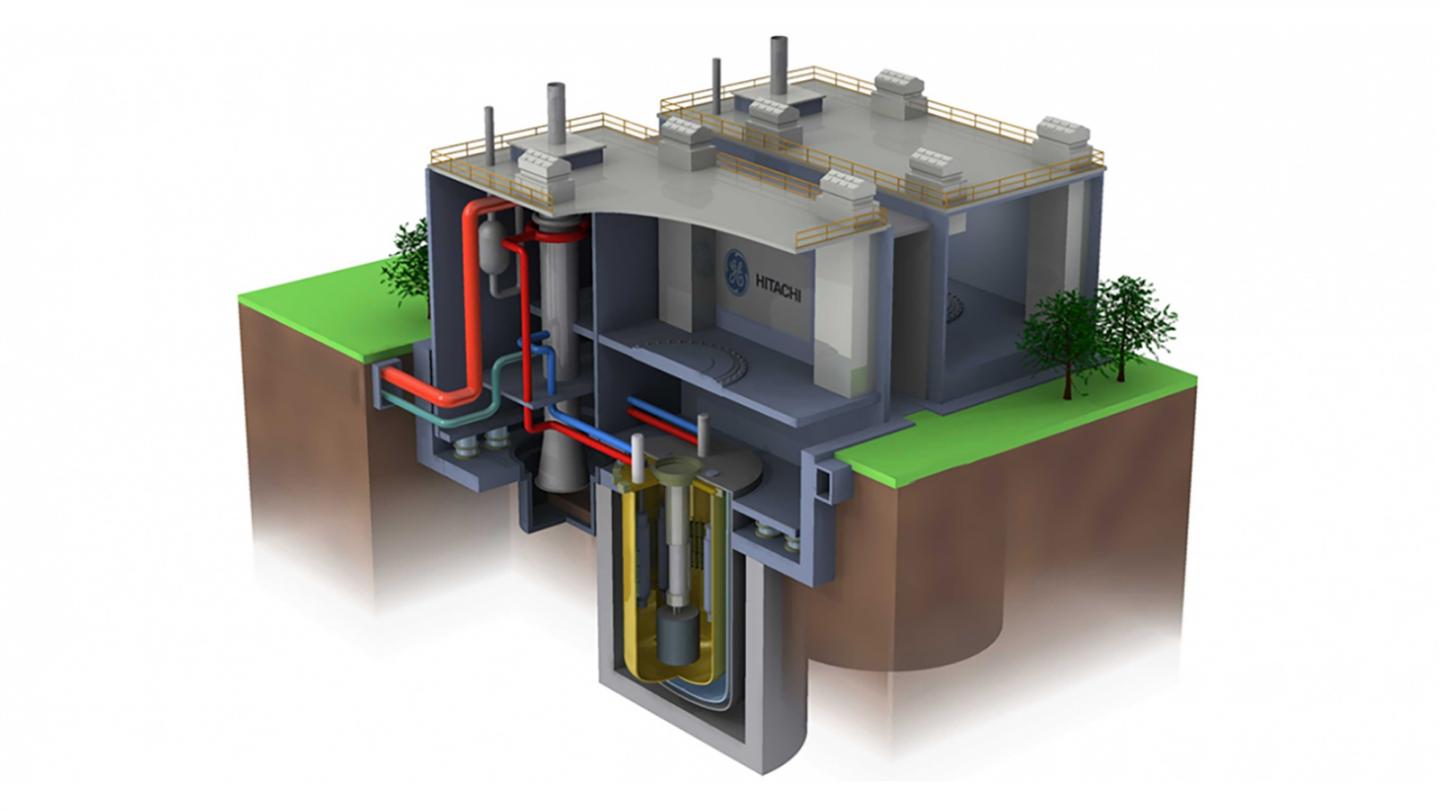
Credit: Image by GE Hitachi Nuclear Energy
Pivotal technology will enable evaluation of many advanced reactor fuels and designs.
For the first time in several decades, construction of new nuclear reactors is underway in the United States. While this new generation of nuclear reactors is based on well-established water-cooled reactor technology, energy companies have expressed interest in new advanced reactor concepts that could soon become much closer to reality.
As a major player in a new collaboration that brings together U.S. Department of Energy (DOE) national laboratories, General Electric and other commercial organizations and universities, Argonne is working on the development of a conceptual design for an irradiation test reactor called the Versatile Test Reactor (VTR).
Although the VTR will not produce electricity, it will allow nuclear engineers to try out different fuels, coolants and other reactor components as they evaluate new technologies for future generations of advanced nuclear reactors.
“What we are developing is an enabling stepping-stone to innovative reactor designs of the future.” — Florent Heidet, Argonne advanced nuclear energy systems group leader.
Within the VTR, scientists will perform irradiation experiments in several different test locations where they can evaluate innovative fuels or other experimental setups, said Robert Hill, Argonne’s advanced reactor program manager.
“In those locations, you have a lot of flexibility for what you can put in,” Hill said. “You could test not only a different type of fuel but a different environment that would model some other totally different reactor type.”
“You can think of building the VTR like an automaker building the platform for a new car,” added Florent Heidet, who leads Argonne’s advanced nuclear energy systems group and is heavily involved in the planning of the VTR. “You can change out the steering wheel, or the transmission or the tires and see how those components perform.”
While the VTR will not be completely modular or reconfigurable, because many parts of the reactor will need to remain unmodified, the variety of experimental configurations will provide key information to scientists as they work to develop ideas for possible future commercial nuclear reactors.
“The reactor provides the testing environment to try new things, but the reactor is not in and of itself a test,” Hill said.
“What we are developing is an enabling stepping-stone to innovative reactor designs of the future,” Heidet added. “The VTR itself is founded on well-established technology, but we anticipate that the science it will make possible will underpin a new generation of nuclear reactors.”
The VTR will consist of a sodium-cooled fast reactor, a design that has been around for several decades; the reactor will be the first fast-neutron spectrum testing facility built in 20 years. Within that platform, scientists believe that the VTR can reveal the advantages of different reactor technologies.
“Argonne is one of the leading institutions in the world for understanding the design and development of sodium-cooled fast reactors,” Hill said. “Our expertise is recognized worldwide and sought by other countries looking to develop their own nuclear energy infrastructure.”
The fundamental purpose of the VTR is scientific discovery integral to a better understanding of how different fuels and reactor materials behave under real-world conditions, Heidet said. Experiments using the VTR could examine how materials change during and after irradiation.
“The focus of this reactor is to provide irradiation testing of new fuels and new materials to support future innovations of fuels and materials,” Hill said.
By building the VTR, researchers and engineers will also pave the way for more test reactors that could use a similar model, Heidet said. “Anyone who wants to build the same type of reactor will have an easier path. The experience will make it much easier for them,” he explained. “On top of the science knowledge, we will be gaining the building and engineering experience.”
The site of the VTR has not been determined, although it will likely reside near or at a DOEnational laboratory. According to Heidet, scientists project that the facility could be completed in 2026 — a relatively short time given the amount of work and investment that goes into building a new reactor.
The VTR program is led by Idaho National Laboratory, with Argonne leading the core design and safety analysis. Other national laboratories participating in the VTR program include Los Alamos, Oak Ridge, Pacific Northwest and Savannah River. Funding for the VTR program is provided through DOE‘S Office of Nuclear Energy. On February 22, 2019, DOE determined the need for a fast neutron testing capability and estimated its costs between $3.0 to $6.0 billion with an estimated completion date between 2026 and 2030.
General Electric will design the structural components of the reactor. “If you think of it like a car, GE is providing the car’s frame and body, and we’re providing everything within the engine bay,” Heidet said. “The collaboration between industry and the national labs is essential for the future of nuclear energy in America.”
###
Argonne National Laboratory seeks solutions to pressing national problems in science and technology. The nation’s first national laboratory, Argonne conducts leading-edge basic and applied scientific research in virtually every scientific discipline. Argonne researchers work closely with researchers from hundreds of companies, universities, and federal, state and municipal agencies to help them solve their specific problems, advance America’s scientific leadership and prepare the nation for a better future. With employees from more than 60nations, Argonne is managed by UChicago Argonne, LLC for the U.S. Department of Energy’s Office of Science.
The U.S. Department of Energy’s Office of Science is the single largest supporter of basic research in the physical sciences in the United States and is working to address some of the most pressing challenges of our time. For more information, visit the Office of Science website.
Media Contact
Chris Kramer
[email protected]
Original Source
https:/




